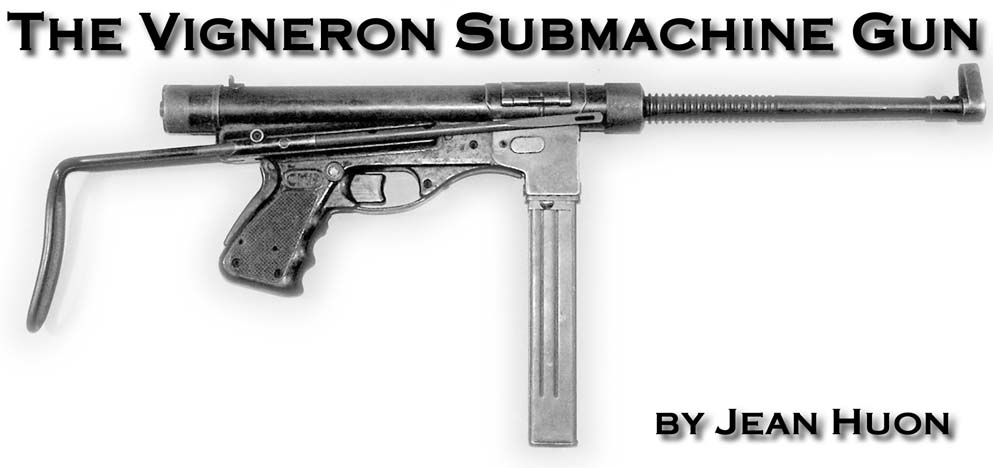By Jean Huon
In 1933, F.N. Herstal manufactured under license the Heinneman submachine gun, which was presented to several countries in Europe. The weapon had a complex mechanism with a lateral toggle-joint system of locking; working like the Luger pistol. Belgium was not interested in it and it adopted a local copy of the Schmeisser MP 28/II submachine gun, under the name of Machine Gun Model 1934, and was manufactured under license by Pieper.
After WWII, Belgian troops were primarily equipped with English material and particularly with Sten submachine guns and to a lesser extent with the American Thompson.
With the beginning of the 1950s, Belgium, which had just adopted the semiautomatic SAFN 49 rifle, also wished to bring into service a national designed submachine gun. Several models were put to test:
- Many prototypes from F.N.,
- Submachine gun RAN, designed by Vitold Porebski in 1954 and manufactured by Repousmetal in Brussels,
- Submachine gun Racour, a copy of the Sten Mk II, realized in 1952,
- Submachine gun M.I. 53, an improved variation of the Sten Mk II manufactured by Imperia in Nessonvaux, close to Liege,
- Submachine gun Vigneron.
After several trials, the Belgian Army chose the Vigneron. It was designed by retired Belgium Army Colonel Georges Vigneron. The invention is covered by the Belgian patent No. 502.942 and 156.000 and the gun was manufactured by Précision Liegeoise S.A. in Herstal.

The initial version adopted in 1952 was designated as the M1. The weapon has a Z shaped metal wire stock, a peep rear sight, no protection for the front sight, and no selector. It was replaced two years later by an improved version designated Mitraillette Vigneron M2. All the Vignerons whose serial number is higher than 21,300 are of the M2 type and the earlier M1 models were modified and a 2 was struck overprinting the 1, which appeared in the marking designation.
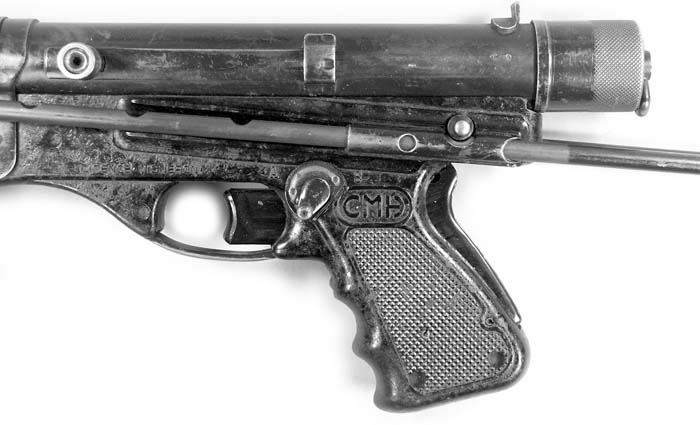
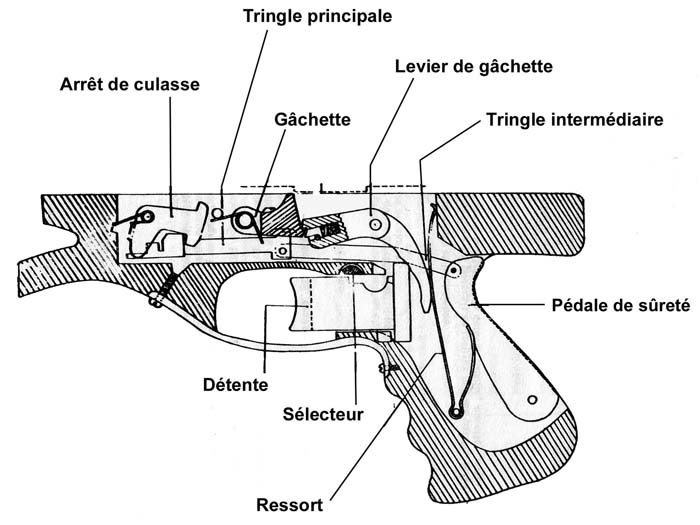
Description
The receiver is made of a 34 mm steel tube, threaded at both ends. At the front is a screwed ring that retains the barrel. The barrel is tapered with cooling ribs to the back part and a compensator at the muzzle. The front sight is hooded for protection. The barrel is 9mm and has six right-hand grooves. The rear of the receiver is sealed by a screwed plug.
A sleeve consisting of the magazine housing is welded over the receiver. It contains the ejection port which has a folding cover that can be automatically opened when the bolt moves either in the closing or opening position.
A lion, the symbol of the Belgian Army, is located on the right side of the magazine housing. Markings on the left side of the magazine housing are:
- ABL (for Armée Belge or Belgian Legeer) 52 (or year of manufacture)
- VIG M2
- Serial number
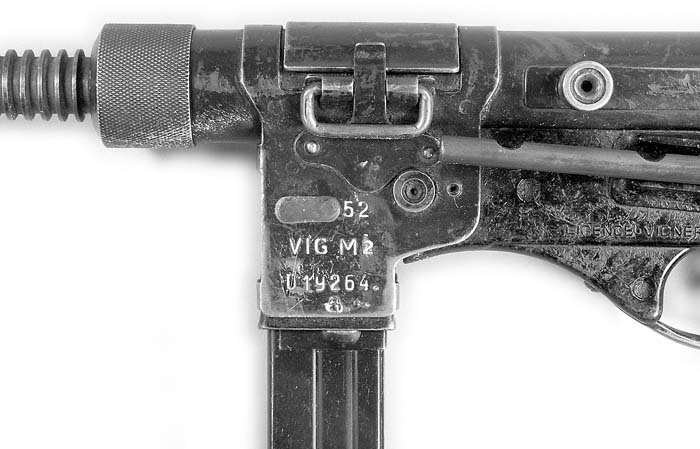
The magazine was derived from that of the MP 40. As there was an abundance of MP 40 magazines left over from the war, they could be used as well. The magazine is retained by a transverse push rod.
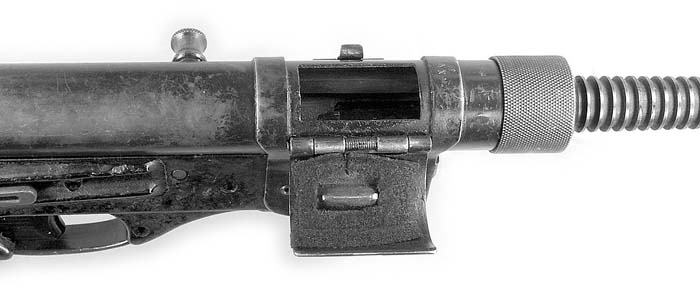
The cocking handle is located on the left side of the gun. The pistol grip contains the trigger mechanism and has two synthetic material grips. The side faces of the grips are checkered and marked with CMH. Just above the trigger one can read on the left face of the trigger pack Systeme Vigneron. The trigger pack contains a grip safety, connected to a bolt stop by a rod, the trigger, a connection lever, sear, and a rotary selector switch on the left side with R for single shot, A for automatic and S for safety.
On each side of the trigger pack just below where it meets the receiver tube are two tubes with a transverse push rod to receive the two branches of the stock. The stock is of the trombone type, with two stems and can be adjusted to four positions. The right stem is longer than the left and is flattened at its end to be used as a cleaning-rod.
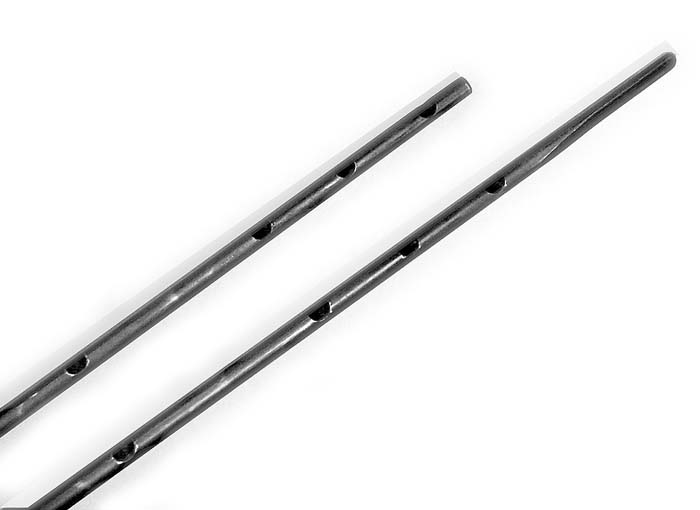
The bolt is cylindrical with integrated firing pin. The recoil spring is comprised of 16 whorls and the diameter of the first third of the spring is smaller than the remainder.
The front post sight is protected by a hood and the rear aperture sight is set for shooting at 50 meters.
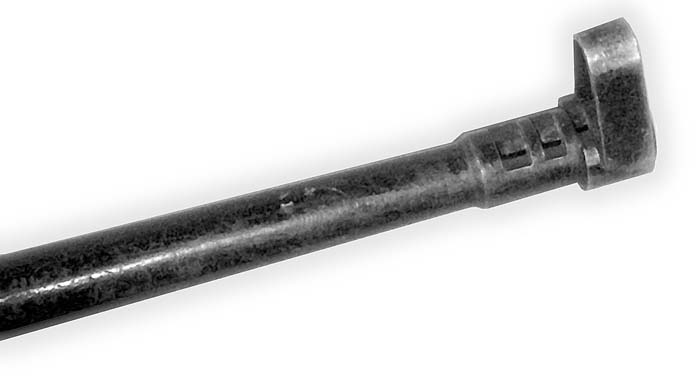
The weapon is parkerized and painted black. Accessories include a sling in khaki fabric, loading tool, blank firing barrel, and a sleeve for the launching the Energa grenades.
Disassembly
Remove the magazine and clear the gun. Take off the stock. Unscrew the barrel ring to separate this element from the receiver. Unscrew the rear plug and remove the recoil spring. Extract the bolt from the receiver tube. Remove the grip. Reassembly is carried out in the reverse order.
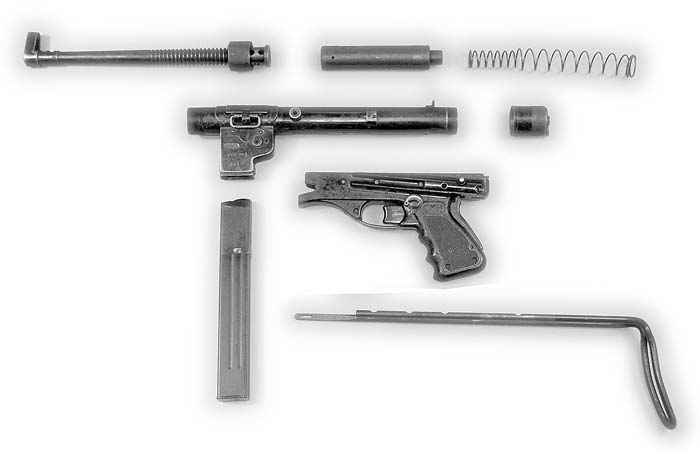
Distribution
The Vigneron submachine gun was used by the Belgian Army, up to the 1980s. It was also used in the former Belgian colony of Congo by the police force (named Force Publique), then by the various factions which clashed in ex-Belgian Congo, Katanga and Zaire.
Further Experimental Prototypes
Colonel Vigneron continued his research and developed improved versions of the M2 submachine gun (correspondence with the author in the 1970s):
- Submachine gun “X”. This modification was covered by Belgian patent No. 675.720 and is a simplified version of the M2 model and is characterized by a reduced number of parts (18 instead of 40). Additionally, the safety lever is placed on the left in front of the trigger, the selector is on the right and the sights are mounted on the receiver.
- Recoilless submachine gun, invention covered by Belgian patent No. 738.604. This unique gun was provided with a gas exhaust system to reduce the recoil.
None of these weapons were produced in series.
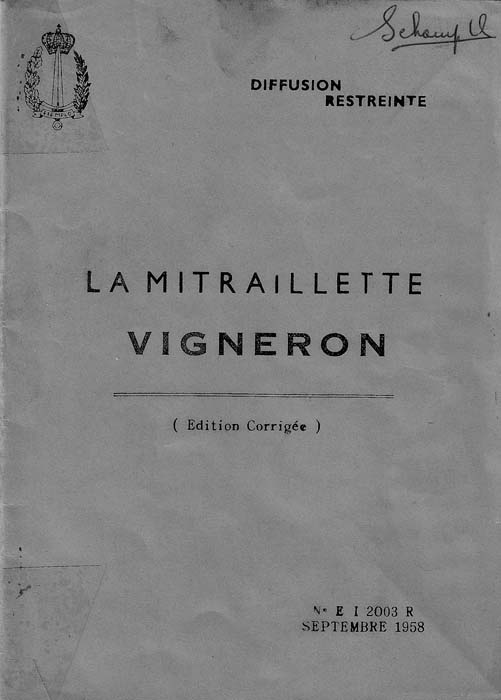
Vigneron M2
Ammunition: 9mm Luger
Overall length: 0.887 m (34.92 inches)
Length with stock folded: 0.612 m (24.1 inches)
Barrel length: 0.305 m (12 inches)
Weight without magazine: 3 kg (6.61 pounds)
Magazine capacity: 32-rounds
Cyclic rate: 500 rpm
| This article first appeared in Small Arms Review V12N5 (February 2009) |



